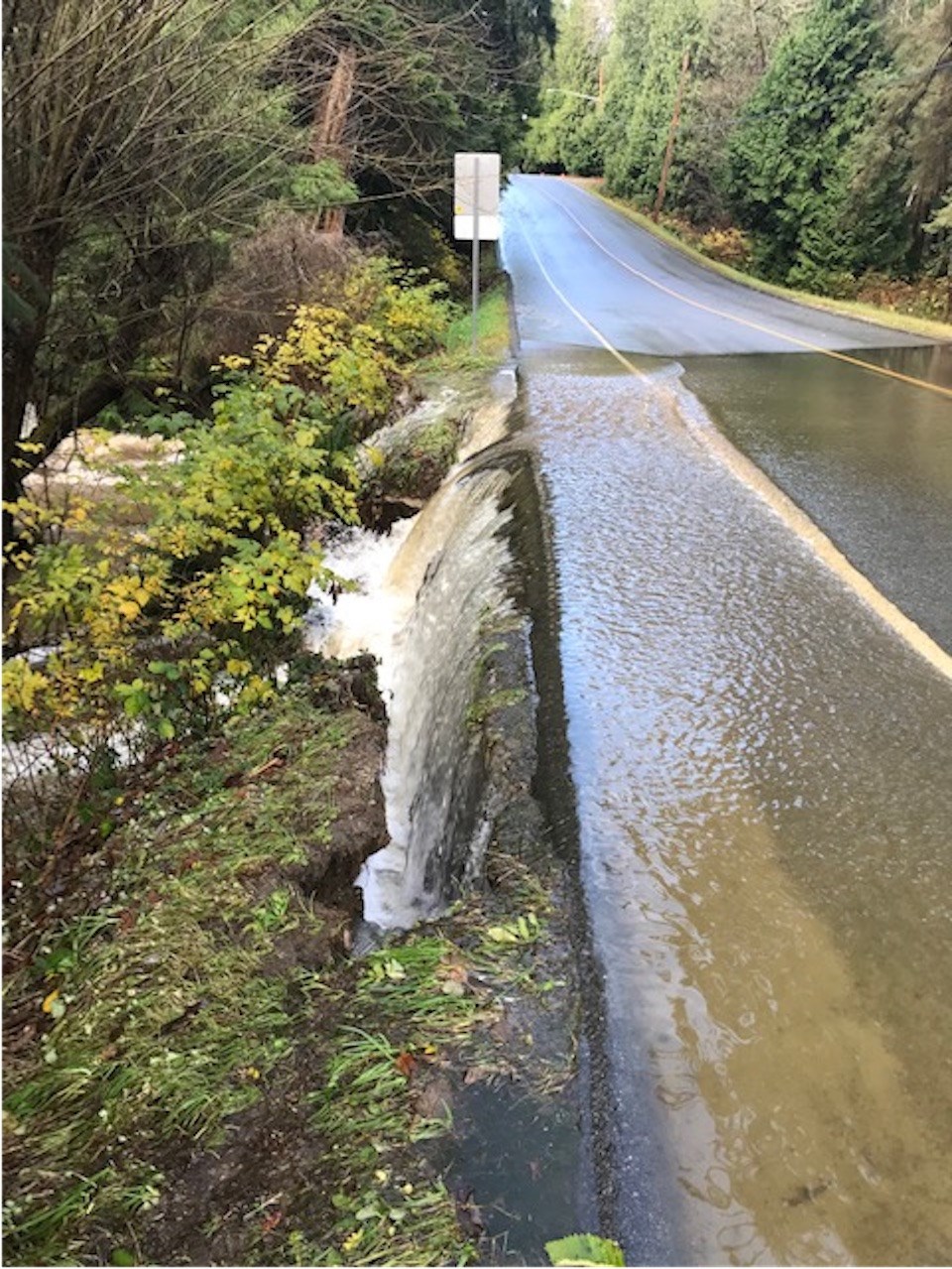An engineering assessment of the section of Norwest Bay Road, locally known as Sleepy Hollow, says the road is “structurally sound and in good shape” according to Sechelt engineering director Kirn Dhillon. He said that during the Nov. 15 atmospheric river weather event, a culvert in that area, near West Sechelt Elementary school, became plugged with debris and flooded. That forced the municipality to close a section of the road for about a 24-hour period.
The assessment included inspection of the culvert for signs of bowing or gapping and the surrounding area for evidence of erosion. It was conducted by Sechelt’s engineering department. Dhillon said the municipality has three licenced professional engineers on staff who are qualified to undertake this work. Included in that number is Dhillon, who has over five years of roadway engineering experience gained through previous employment in the Yukon.
He told Coast Reporter that if a staff engineer sees the need to bring in specialized expertise, such as structural or geotechnical engineering, Sechelt would contract for that work.
Outside expertise was not required on the recent Norwest Bay Road assessment, Dhillon said. He said that repairs, involving placing of rock on the banks of the water channel to help stop further erosion continue.
Assessment and repairs were also completed on a bridge on Tyson Road that provides access to about six properties, damaged during the same storm. Dhillon said that engineering staff may look at calling in structural engineering expertise to assess the state of that piece of municipal infrastructure.
Speaking about storm impacts for Sechelt, Dhillon said “We faired relatively well compared to most other municipalities, and better than the Sunshine Coast Regional District for sure, as we had no major road washouts or closures.”
The final weeks of November saw municipal staff cleaning out drainage infrastructure throughout the municipality including removing a large log from a culvert in the Tuwanek neighbourhood.
“Ditches on residential roads and culverts on private driveways are the responsibility of the property owner to maintain,” said Dhillon. To help prepare for continuing wet weather, he asks that owners check those areas near their properties to ensure that storm water can drain properly to protect their own property, their neighbourhood and municipal infrastructure from flooding.
Sechelt is also keeping watch on stormwater infiltration at the Water Resource Centre (WRC) and the potential for flooding of wastewater lift stations. It uses a System Control and Data Acquisition (SCADA) system at the WRC and many of its sewer lift stations. The system allows staff to remotely monitor wastewater component operations 24 hours per day. It sends alerts to the on-call staff members’ cellphone when issues arise that require the operator’s attention on-site.
Improvements to the SCADA system valued at $63,000 were approved but not undertaken in 2021. Dhillon said the work did not proceed due to staffing issues and is being considered as a carryforward project in the 2022 budget.
“The staffing situation is looking much better in both the engineering department and at WRC so we can start working on these long term projects,” Dhillon told Coast Reporter. He said that two new positions in the engineering department have been filled recently and that the WRC is slated to have all approved positions filled by January, 2022.
Dhillon also noted that staff are aware of the “king tides” that are forecast to impact the area in early December. He said that the potential combination of higher-than-normal tides and strong winds is of concern and that staff will be monitoring areas prone to tidal storm surges and flooding.



